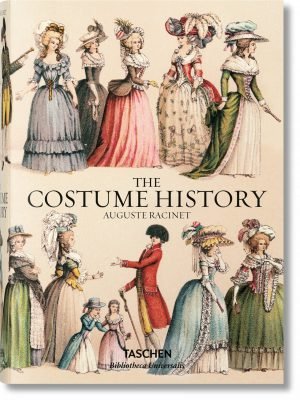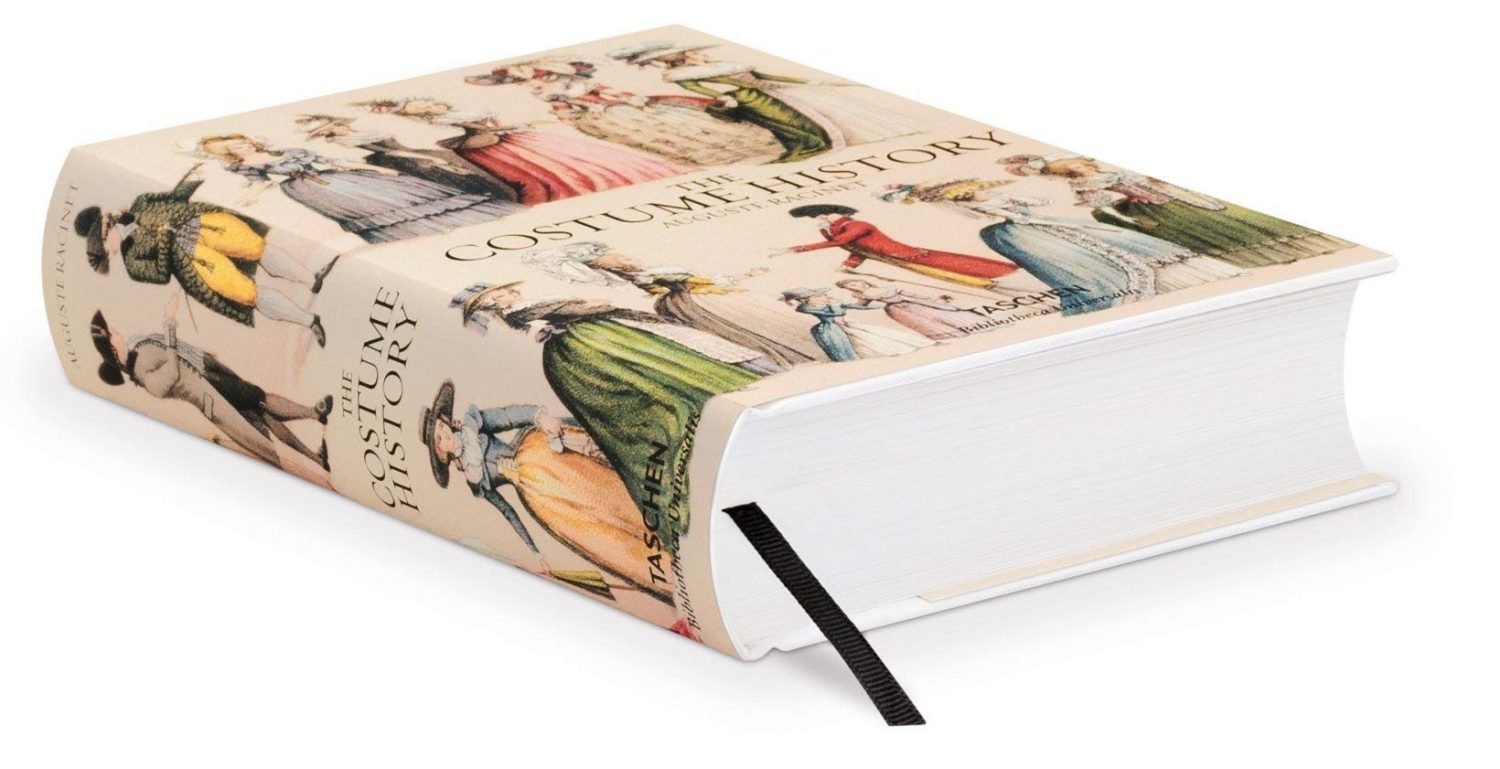MEDIUM AGE. XV. CENTURY.
THE CHALLENGER AT THE TOURNAMENT. ENTERING THE BARRIERS TO TAKING THE OATH.

3, 2,
1, 4,
Noblemen of the court of Charles VIII.
No. 3 and 4 from a Ms. of the National Library in Paris.
NR. 1 and 2.
The two fragments form a group from the Tournai du roi René of 1450 and represent the entry into the barriers of the oath. The Duke of Brittany is the challenger, the Duke of Bourbon the Challenged.
The Duke of Bourbon rides in bourgeois costume, a staff in his hand, behind him his standard-bearer. The servants are also unarmed. Heralds in tabards, knights and others form espaliers. The Duke’s steed wears a blue blanket with golden lilies and horizontal stripes, and a golden lily on the steel headpiece.
The barriers were double. In the space between them the retinue of knights stayed. Around these barriers, tribunes were built.
Nos. 3 and 4. noblemen à la mode around 1488.
Cap under a hat with opened brim, lying or upright feather, jewel at the brim of the hat. Long robe, open at the front, wide open at the shoulders, with sleeves reaching over the hand above a doublet.
The sleeve slit of no. 3 lets you see the red doublet.
A golden chain runs across the chest; the sword is in a leather belt with gold-plated nails. The left hand carries a falcon, the right hand a bird’s claw to lure the falcon back to the fist. Next to it a greyhound.
No. 4 carries a staff in the hand covered with the long sleeve. The gloves were still little used at that time. They were worn only during the war, except for hunting.
No. 1 and 2 from the Tournai du roi René, No. 3 and 4 from a Ms. of the National Library in Paris.
See Costume du moyen âge, Brussels, 1847 – Histoire du costume en France, by Quicherat. – Institutions, usages et costumes au moyen âge, by P. Lacroux.
Source: History of the costume in chronological development by Albert Charles Auguste Racinet. Adapted by Adolf Rosenberg. Berlin 1888.








